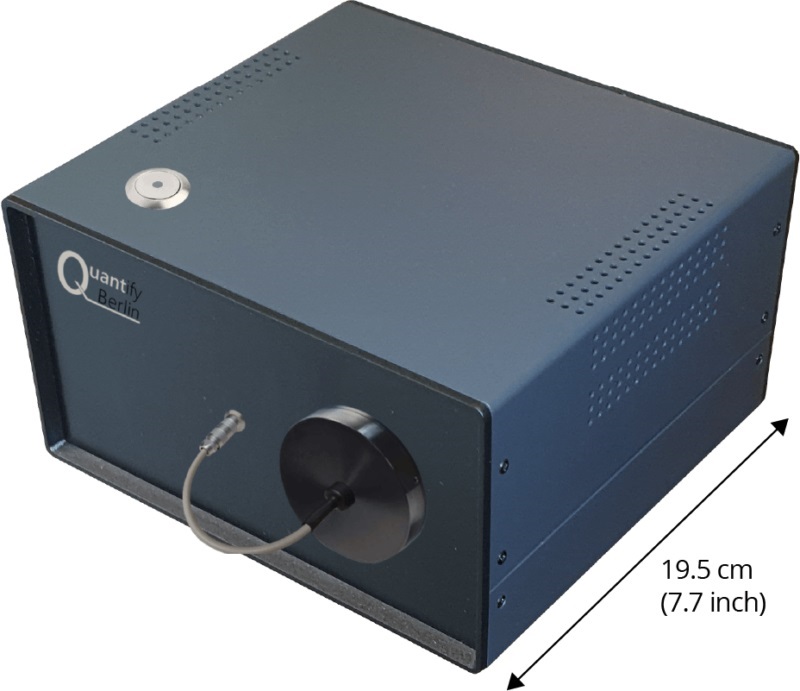19.06.2020
In order to develop efficient opto-electronic devices such as solar cells or LEDs, it is crucial to improve the quality of the semiconductors. To achieve this, it is necessary to determine the luminescence yield of the semiconductor material. For this characterization, a research team at HZB has developed a new measuring device that precisely determines the luminescence and is also very compact. In order to evaluate the potential for commercial applications, the team now receives a Field Study Fellowship from the Helmholtz Association.
A research team from HZB has already built a working prototype of the instrument, which will now be developed into a commercial product. The aim is to make the "LumY Pro" measuring system, which was developed and optimised for their own research, available to a wide range of users - in the spirit of technology and knowledge transfer. The researchers are focusing on users from research and industry who are working on the further development of opto-electronic devices such as solar cells and LEDs.
The "LumY Pro" measuring device is smaller than a shoe box (20x22x12 cm) and can also be used in the protective atmosphere of a glove box. It measures the quantity of photons or electrons being injected into a sample and the quantity of photons emitted by the excitation (absolute photon or electroluminescence). This enables researchers to draw conclusions about the charge carrier density in the absorber and to look in detail at where losses occur in the device or layer.
Measuring the quality of film absorbers, layer stacks and complete devices
Single layers, but also layer stacks and complete devices can be examined with flexibly adjustable light intensities and electrical voltages. The detailed analysis is integrated in a specially developed measuring and evaluation software. The software and the prototype of the system have already been successfully tested on various semiconductors in cooperation with the Helmholtz Innovation Lab HySPRINT.
Applicable for many semiconductor materials - evaluation software is included
LumY Pro can be used for the quality characterization of organic-inorganic perovskites, but also of other semiconductor materials such as kesterites or gallium arsenide. The development team hopes to accelerate the research and development of such opto-electronic devices and reduce the consumption of resources. The potential is great, because more than 400 research groups worldwide are working on solar cells made of perovskites alone.
"A precise measuring system that combines all these characterization possibilities is currently lacking on the market. We now want to implement this in a compact, versatile and yet easy to use product," says Dr. Lukas Kegelmann from the project team. The field study will now show how large the market potential is and which applications and functionalities are particularly interesting for users from research and industry.
LumY Pro was developed by scientists of the HZB groups around Dr. Thomas Unold, Dr. Eva Unger and Prof. Dr. Steve Albrecht.
(sz)















